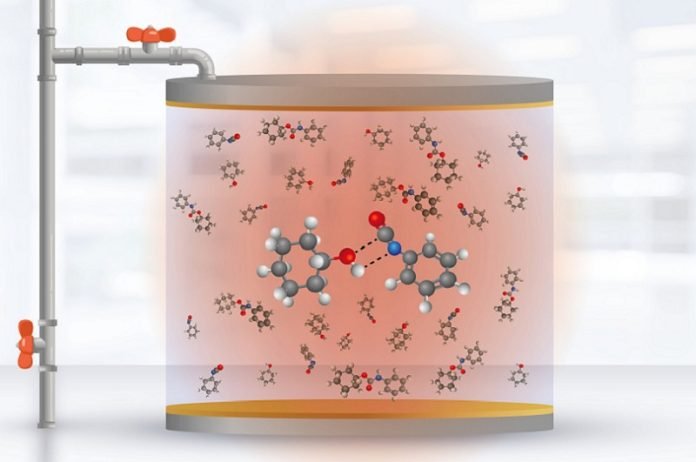
Controlling chemical reactions to create new products is a major challenge in chemistry.
Recently, researchers in the field of polariton chemistry have made exciting progress in using quantum optics techniques to manipulate chemical reactivity.
They have been able to modify the outcomes of reactions in organic compounds by harnessing electromagnetic fields.
However, until now, a comprehensive understanding of this phenomenon and consistent replication of experimental results have eluded scientists.
In a groundbreaking study, a team of researchers from the Universidad de Santiago (Chile) and the US Naval Research Laboratory has successfully manipulated the formation rate of urethane molecules, providing a crucial theoretical and experimental foundation for selectively modifying chemical reactions at room temperature.
This discovery has the potential to revolutionize the industry by reducing waste and improving the efficiency of various chemical processes.
Chemical reactions involve the breaking and rearranging of bonds between atoms in molecules, resulting in the formation of new substances called products.
These reactions often require energy and can be explained by physicochemical principles based on thermodynamics, which date back to the 19th century. Additionally, principles of reactivity based on molecular structures have guided chemists for decades.
However, these principles assume that each reaction occurs independently of others in a solution. The new research challenges this assumption by revealing the impact of the electromagnetic field vacuum within an infrared cavity on different chemical reactions taking place simultaneously.
This finding calls into question the traditional understanding of chemical reactivity.
The research team began their investigations in 2020, with the initial experiments conducted by Dr. Wonmi Ahn at the US Naval Research Laboratory. In 2021, Blake Simpkins, a researcher at the laboratory, refined the experimental setup to ensure reproducibility and enhance the liquid cells where the reactions took place.
Meanwhile, Professor Felipe Herrera from the Universidad de Santiago collaborated with Simpkins to develop a theoretical framework to support the experimental results.
By integrating the principles of quantum optics and theoretical chemistry, they successfully created a comprehensive theory that explained and reproduced the observed effects.
The team’s findings, published in the journal Science, represent a significant step forward in the field. By modifying the dynamics of the chemical bonds involved in a reaction using infrared vacuum, researchers were able to control the formation of specific products.
This achievement opens up new scientific frontiers and challenges.
The ultimate goal is to develop a simplified and universal theoretical and mathematical framework that can be adopted by scientists worldwide to interpret their own experiments and potentially devise innovative measurement techniques.
The implications of this research extend beyond the realm of polariton chemistry. Dr. Herrera envisions a future in which a unified theory bridging the gap between chemical kinetics and quantum physics can be established.
This would represent a remarkable achievement, merging two highly successful disciplines in modern science.
With continued exploration and collaboration, scientists hope to unlock even more profound insights into the fundamental workings of chemical reactions and revolutionize the way we control them.
A recent breakthrough in quantum physics has paved the way for controlling chemical reactions using electromagnetic fields.
Researchers from the Universidad de Santiago and the US Naval Research Laboratory have successfully demonstrated the ability to modify the rate of chemical reactions at room temperature.
This discovery holds immense potential for improving industrial processes, reducing waste generation, and accelerating the development of catalysts.
By unifying the principles of chemistry and quantum physics, scientists are on a path towards a more comprehensive understanding of chemical reactions and the ability to manipulate them effectively.



